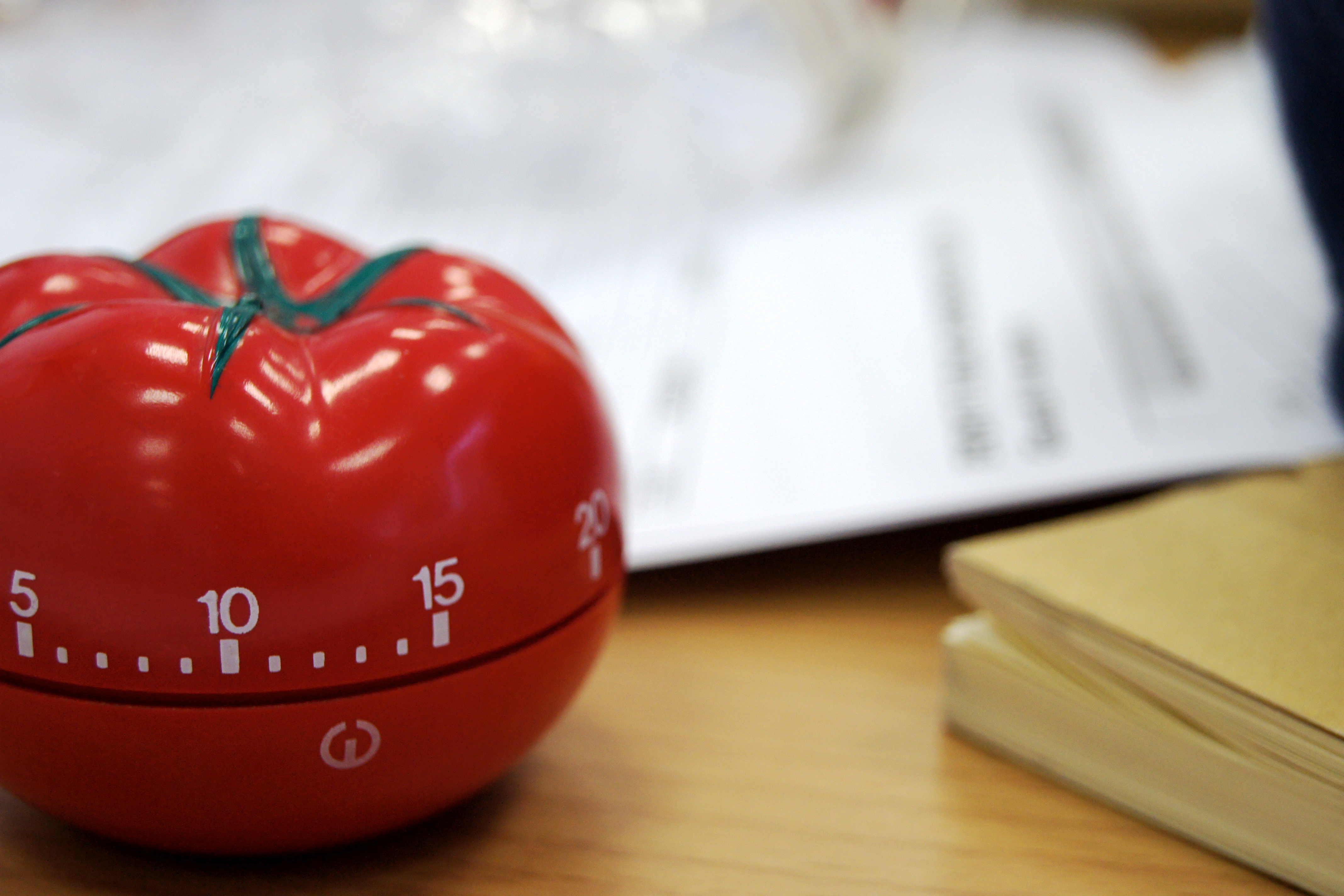Fighting Multitasking One Pomodoro a Time | Dominik Mayer – Products, Asia, Productivity
Fighting Multitasking One Pomodoro a Time

(Image: Luca Mascaro)
Multitasking is a great feature of most modern operating systems. Unfortunately, the human brain was created a while ago so our implementation is far away from being perfect. Problems occur in both kinds of human multitasking:
Real multitasking
Real multitasking is when you do two things at the same time. Reading while listening to music, finishing a mail while watching TV or eating and talking to your wife. From my experience, real multitasking does only work when you don’t have to split your attention, when you don’t have to focus on more than one thing. Listening to the radio while driving a car is relaxing. But once you run into a critical situation, one that needs your attention, the radio becomes either distracting or you completely block it off, not realizing that it’s still playing.
Looking at the examples, I’d say that food and wife is great, e-mail plus TV will never work and reading with music depends on the music. In my case, it doesn’t work if I understand the lyrics. So what’s the cure for not working real multitasking? Get rid of the distraction. Turn off the TV, go to another room, get earplugs. Whatever.
Pseudo multitasking
Context Switching is the technique a single-CPU computer uses to emulate multitasking. It can’t process two things at the same time so it switches back and forth between all the tasks it has to finish. In that, the CPU has a huge advantage over the human brain: It is not bothered by unnecessary thoughts. It loads, stores, loads, stores all the things it needs to know in order to do exactly what it’s supposed to do. If only we had that capability.
When we work on something, get stuck and check our mails or then talk to a colleague, our mind will not save the exact state it had when we switched focus. And it will not be able to get back into that exact state because there are too many new things that have happened in the meantime. Maybe it wasn’t even necessary to check the mails. Did we just want to get away from what we should have been working on?
I found out that I’m highly prone to these kind of distractions. I check mails, news, Blogs, Facebook, Twitter and then I start all over again. Maybe something has happened in the last ten minutes. Hours can pass like this. I need a way to focus.
Pomodoro technique
One day, I stumbled upon the Pomodoro Technique which, in short, defines an increment of undisturbed work, called a “Pomodoro”. (There is more to the Pomodoro Technique which I’ll not cover here because I only use it for time, not for task management. You could say that I “press” the existent tasks in a Pomodoro.)
So you’d work one Pomodoro, have a five minute break and start the next one. — Don’t forget to also use a timer for the breaks! One of my early mistakes were breaks that went from five to 50 minutes because of mails, news, Blogs, … — After each four Pomodoros you get a longer break.
While you can choose any timespan you want for the Pomodoro, it’s good to stick with the suggested 25 minutes. It’s long enough to get something done and short enough to provide an easy start. Or with Confucius: Every project starts with a single Pomodoro.
That’s one of the secrets behind the Pomodoros. It’s much easier to say “I’ll do one Pomodoro” than “I will write that paper”. And after one Pomodoro you’ve already started and you say “I’ll do another one.” And another one and a fourth one and there’s the break. Puh. You finished a whole block. Not bad.
Pomodoro sheets
After months of doing more or less Pomodoros I pondered about when and why I use them and, more interestingly, when and why I don’t. I did use Pomodoros when I had to get a lot done in short time. For every Pomodoro I finished, I wrote the first letter of what I was doing on my wall calendar behind the screen. “C” for Chinese, “L” for Law, “E” for economics (well actually I used the German words and abbreviations, but that’s not important). The result: I have the Pomodoros in front of me. Does it help me? No. Why? Because it doesn’t motivate me to do more.
I needed a stricter way of tracking my accomplishments. The first Pomodoro Sheet was born. It featured eight “Must” Pomodoros, the minimum I wanted to do every day. Once I finished them, I would be able to check a box as a simple form of reward. A “badge”. There were another four “Should” and four “Can” Pomodoros. Working with the sheet went extremely well and short after I created another one with more fields and only four “Must” on Saturday and none on Sunday. You can download the Pomodoro Calendar with sheets for the whole year.
Why does it work?
- Every project starts with a single Pomodoro.
- There are only 3, 2, 1 Pomodoros left to the big break.
- Five minute breaks are enough to make sure you don’t miss an important mail or the end of the world. (Some people suggest limiting yourself by only checking your e-mails once a day. Personally I think that’s not necessary — as long as you keep your break times.)
- You can check a box as a reward. As stupid as this might sound, it really works. You’re tired and you want to go to bed but there’s only one Pomodoro left to make the whole four count.
Read on
- Multitasking in a project context: Multitasking Gets You There Later